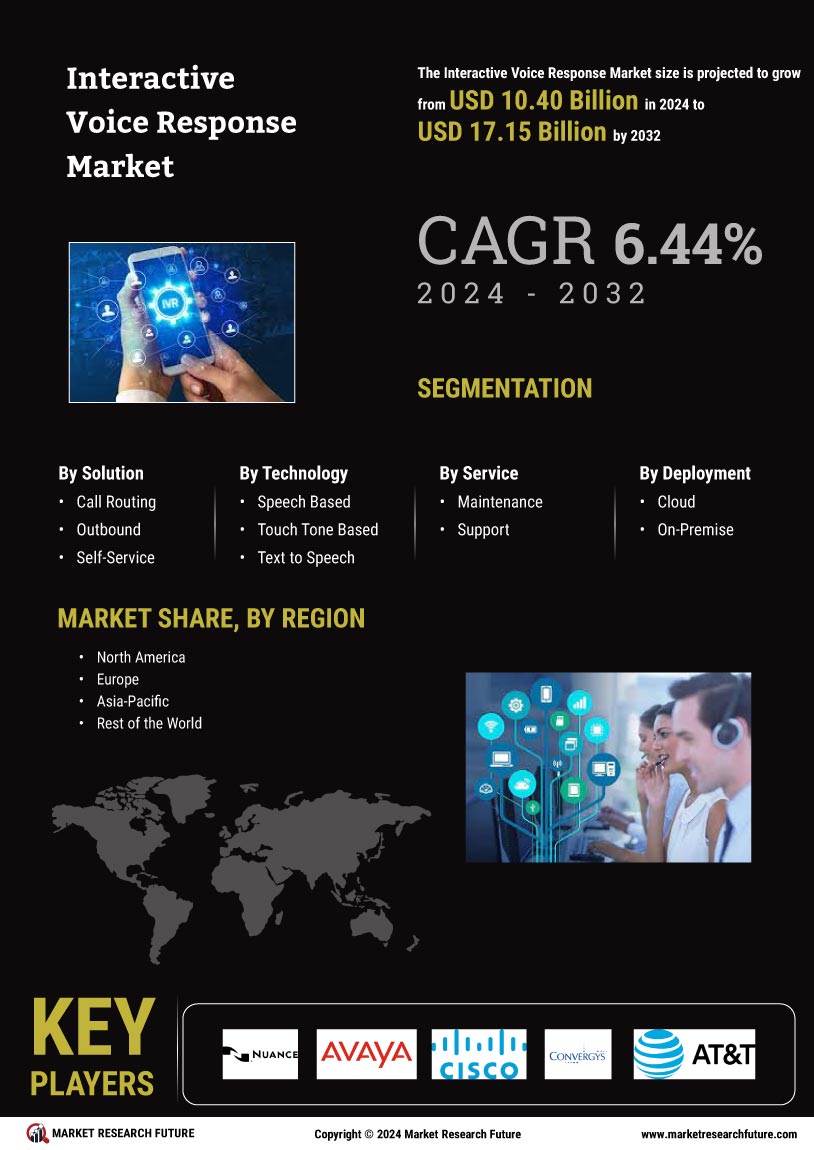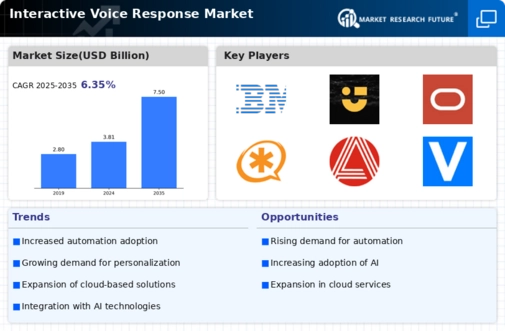Technological Advancements
The Interactive Voice Response Market is experiencing a surge in technological advancements, particularly in artificial intelligence and machine learning. These innovations enhance the capabilities of IVR systems, allowing for more natural language processing and improved customer interactions. As organizations increasingly adopt these technologies, the market is projected to grow significantly. According to recent estimates, the IVR market could reach a valuation of over 5 billion dollars by 2026. This growth is driven by the need for businesses to streamline operations and improve customer satisfaction through efficient automated systems.
Rising Demand for Cost Efficiency
Cost efficiency remains a pivotal driver in the Interactive Voice Response Market. Organizations are continually seeking ways to reduce operational costs while maintaining high service levels. IVR systems provide a solution by automating routine inquiries and transactions, thereby minimizing the need for extensive human resources. This trend is particularly evident in sectors such as telecommunications and banking, where companies report savings of up to 30% in operational costs after implementing IVR solutions. As businesses strive for financial sustainability, the demand for cost-effective IVR systems is likely to increase.
Expansion of Cloud-Based Solutions
The shift towards cloud-based solutions is a significant driver in the Interactive Voice Response Market. Cloud technology offers scalability, flexibility, and cost savings, making it an attractive option for businesses of all sizes. As organizations increasingly migrate to cloud platforms, the demand for cloud-based IVR systems is expected to rise. Reports suggest that the cloud segment of the IVR market could witness a compound annual growth rate of over 15% in the coming years. This trend reflects a broader movement towards digital transformation, where businesses seek to leverage cloud capabilities to enhance operational efficiency and customer engagement.
Regulatory Compliance and Security
Regulatory compliance and security concerns are becoming more pronounced within the Interactive Voice Response Market. As data protection regulations tighten, organizations are compelled to adopt IVR systems that ensure secure handling of sensitive customer information. This necessity is particularly relevant in sectors such as finance and healthcare, where compliance with regulations like GDPR and HIPAA is critical. The market is likely to see a shift towards IVR solutions that incorporate robust security features, thereby addressing both compliance and customer trust. This trend may drive innovation and investment in secure IVR technologies.
Increased Focus on Customer Experience
The Interactive Voice Response Market is increasingly influenced by the emphasis on enhancing customer experience. Companies recognize that effective communication is crucial for customer retention and satisfaction. IVR systems facilitate this by providing quick and efficient responses to customer inquiries, thus reducing wait times and improving service quality. Recent surveys indicate that organizations utilizing advanced IVR solutions report a 20% increase in customer satisfaction scores. As businesses prioritize customer-centric strategies, the adoption of sophisticated IVR systems is expected to rise, further propelling market growth.


















Leave a Comment